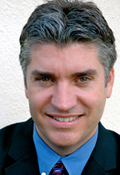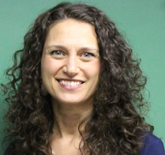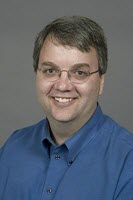Here’s an excellent story from Carol Biliczky of the Akron Beacon Journal. The story was published yesterday and updated today.
Former Akron police Capt. Douglas Prade has been called a cold-blooded murderer.
But to at least one student, he was “one of the darlings of the nursery.”
“Because of the evidence in his case, it never sat well with any of us that he committed the crime,” said Kyle Healey, a former law student at the University of Cincinnati and now a U.S. attorney in Tucson, Ariz.
Healey is part of a chain of UC students in the Ohio Innocence Project that helped to free Prade from prison last month.
It was the 16th time UC law students had done so since the inception of the university’s program in 2003 — a rare success, given that about 800 inmates apply for help each year.
The Ohio Innocence Project is among 64 affiliates worldwide whose work last year exonerated 22 people of the crimes for which they had been convicted.
“We are incredibly selective in the cases we take,” said Carrie Wood, an attorney with the Ohio Innocence Project. “Unless there’s evidence of innocence, we’re not going to file a motion.”
She said the Prade case is among the top two cases that have absorbed the Innocence Project’s time.
At UC, a new crop of 20 second-year law students join the Innocence Project each summer for a one-year stint.
They work in teams, inheriting the previous class’s cases and examining new ones in exchange for $2,500 in full-time work in the summer and four credits in each of the next two semesters.
At any given time, the students are culling applications, interviewing prisoners and witnesses, and strategizing on 300 cases, program director Mark Godsey said.
Potential cases must have new evidence or the possibility of DNA testing.
Even among cases that are pursued, “We’re not thinking all those people are innocent,” Godsey said.
In fact, innocence is rare: The Ohio Innocence Project has gone to court only 24 times on behalf of an inmate.
That includes the students’ first big victory, the Summit County case of Clarence Elkins, who was convicted in 1999 of the rape and murder of his mother-in-law and the beating and rape of his 6-year-old niece. He was freed in 2005.
The three years of work on Elkins’ case paled in comparison to that of the effort for Prade, 66. His case was a staple in the students’ workload for a decade.
Many students on case
Prade’s was one of the first cases students tackled in the program’s inaugural year. By the time he walked out of the Madison Correctional Institution last month, 21 students had worked on his behalf.
Eva Hager Whitehead of Cincinnati remembers going to Akron to visit the crime scene — the parking lot where Dr. Margo Prade was shot six times as she sat in her minivan near her medical office.
Whitehead recalls asking the UC physics department to come up with a way to compute the height of a shadowy figure depicted in a video that a car dealership’s security camera next to the parking lot had captured.
Erik Laursen, a 2005 UC graduate now in private practice in Cincinnati, remembers poring over news accounts, court transcripts and attorney files.
After meeting with Prade for the first time, “I walked out of the prison after spending a better part of an afternoon not believing him, but believing him enough that I really wanted to commit myself,” Laursen said.
Prade similarly impressed other students.
“After I got to know him, I thought, ‘This is worth it. There’s something here,’ ” said Whitehead, who graduated from UC in 2005 and now works as an assistant public advocate in Kentucky.
“Doug has such a presence about him,” said Ryan McGraw, a 2012 UC graduate and attorney in Mason, north of Cincinnati. “He was very composed. He never wanted to get overly excited.”
Bite marks are key
The students’ prospect of success was tied to the evidence that helped to convict Prade in the first place in 1998: bite marks by the killer that left an impression on Margo Prade’s lab coat.
The marks set off “alarms” among student lawyers, who are taught that bite mark evidence falls under the category of junk science.
“Often times,” said Godsey, “it ends up that the person’s innocent.”
Students invested eight years battling the Summit County Prosecutor’s Office to get DNA testing of the bite on the lab coat. The delay infuriated Godsey, especially because the Innocence Project offered to pay for the testing years ago.
“We’ve had plenty of cases where it comes back guilty, and that’s great. That means the system got it right,” he said.
In 2008, the Innocence Project called in the Jones Day law firm in Cleveland, which provided free assistance. Jones Day attorneys Lisa Gates and Dave Alden each estimate they spent 400 hours on the Prade case in 2012 alone, Wood, the Innocence Project attorney, said.
The Ohio Supreme Court ruled in 2010 that the lab coat should be retested using newer methods.
In ordering Prade’s release last month, Summit County Judge Judy Hunter wrote that, “the defendant has been conclusively excluded as the contributor of the male DNA on the bite mark section of the lab coat.”
Summit County is appealing the decision to the 9th District Court of Appeals.
News spreads
Laursen remembers that he was sitting at his private law practice when he heard the news that Prade had been released.
“I believed the DNA would come back in his favor, and when it did, I was elated,” he said.
Healey called it “a breath of fresh air.”
“I was assuming that if the judge exonerated him, he would stay in prison until a new trial,” Healey said.
Prade visited the law school earlier this month to meet with students and alumni who had worked on his case. He could not be reached for comment for this story.
“It was a nice moment to say hi to Doug again,” Wood said. “He touched all of their lives in some way.”
Two students gave Wood letters to give to Prade, because they couldn’t be there in person.
Working on his case, and others, gave them a first-person taste of being an attorney early in their law school education.
McGraw said the work gave him the chance to interact directly with clients, “a skill that is difficult to develop in law school.”
He said he learned not to get emotionally attached to clients — and he succeeded with two exceptions: David Ayers, convicted of murdering a Cleveland woman and freed from prison with his help in 2011, and Douglas Prade.
So important was Ayers to McGraw that he has a picture of the freed inmate on his office desk at Kircher, Arnold and Dame in Mason.
He aims to get one of Prade, too.
“I felt so strongly they were innocent,” he said. “It’ll be something that stays with me forever.”
Carol Biliczky can be reached at cbiliczky@thebeaconjournal.com or 330-996-3729.

















